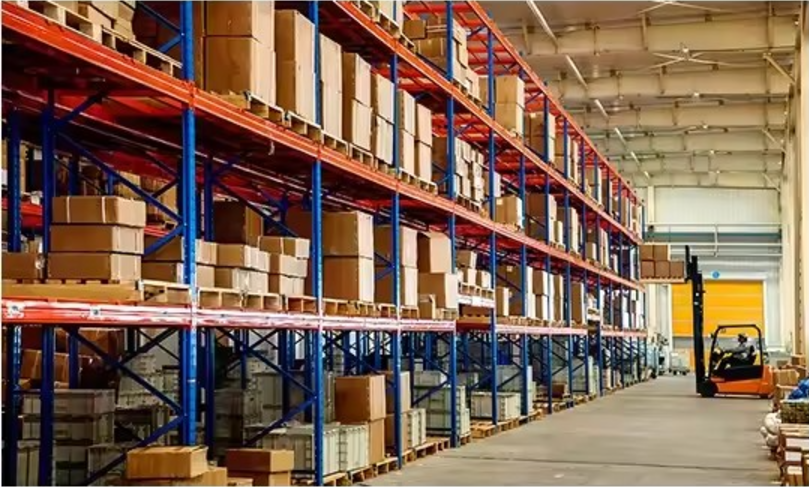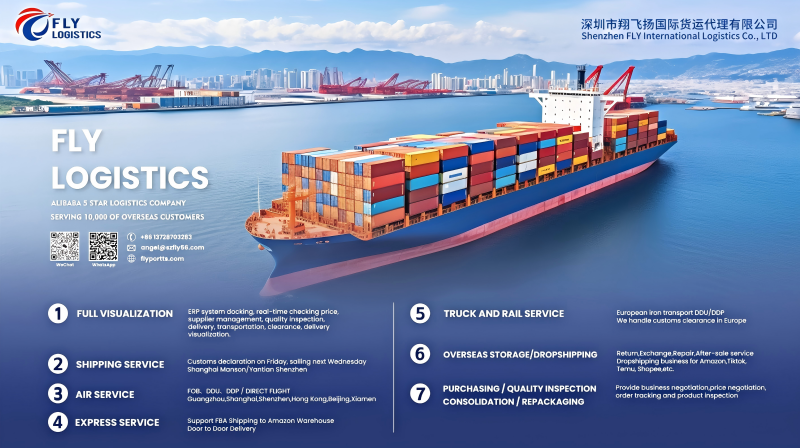The global Overseas warehousing logistics market is poised for significant growth as we approach 2025, driven by the continued expansion of e-commerce, the rise of cross-border trade, and the rapid adoption of advanced technologies. In recent years, the market has experienced a compound annual growth rate exceeding 10%, a trend expected to persist due to the increasing demand for efficient, agile, and scalable logistics solutions. By 2025, the landscape of overseas warehousing will undergo a transformative shift as businesses invest in innovation, sustainability, and smart warehousing technologies to meet evolving market needs.
Key Market Segments
- Transportation Modes: Logistics providers will continue utilizing various transportation modes, including road, rail, air, sea, and multimodal transport, to handle diverse cargo types and distances. Efficiently connecting these modes will be essential for seamless global logistics operations.
- Logistics Service Types: The market will encompass various service types, such as third-party logistics (3PL), fourth-party logistics (4PL), e-commerce logistics, and cold chain logistics. Each of these will be tailored to meet specific customer needs, particularly in supporting overseas and cross-border trade.
- Industry Chain Links: Overseas logistics will cover all aspects of the supply chain, from warehousing and transportation to distribution and supply chain management, ensuring goods flow smoothly from production facilities to end consumers.
- Cargo Types: Warehousing and logistics services will continue to be segmented based on the type of goods handled, including fast-moving consumer goods, industrial products, pharmaceuticals, and bulk commodities, each requiring specialized logistics solutions.
Technological Advancements and Smart Warehousing
A key trend shaping the future of overseas warehousing logistics is the widespread adoption of smart warehousing technologies. By 2025, automation, artificial intelligence (AI), and the Internet of Things (IoT) will become integral to warehouse operations worldwide.
Automated storage and retrieval systems (AS/RS), robotic sorting, and AI-powered inventory management will streamline workflows, increasing operational efficiency by up to 30%. Real-time tracking enabled by IoT devices will allow warehouses to monitor environmental conditions, including temperature and humidity, ensuring optimal storage conditions. Additionally, the deployment of 5G networks will enhance connectivity, enabling faster and more reliable data transmission across global supply chains.

E-Commerce Growth and Its Impact
The global e-commerce market has seen explosive growth, and this momentum will continue through 2025. The increasing demand for fast, reliable delivery services—whether same-day or next-day—will significantly impact Overseas warehousing logistics. To meet this demand, overseas warehouses will need to evolve, focusing on speed, accuracy, and flexibility.
Urban warehousing facilities will play a crucial role in supporting the rapid growth of e-commerce. Strategically located near major cities, these warehouses will be designed for fast order fulfillment, allowing businesses to meet customer expectations for quick delivery. Additionally, the rise of cross-border e-commerce will require warehouses to handle complex international logistics challenges, such as customs clearance, compliance, and return management.
Sustainability and Green Logistics
As sustainability becomes a global priority, overseas warehousing providers will need to adopt green logistics practices to remain competitive. By 2025, eco-friendly initiatives will be essential, driven by both regulatory requirements and consumer demand for sustainable products and services.
Warehouses will focus on reducing their environmental impact by investing in energy-efficient lighting, solar power installations, and green building materials. Resource optimization and waste reduction will be key priorities, while the adoption of electric vehicles (EVs) for transportation and the development of green supply chain solutions will further support sustainability goals.
Government Policies and Infrastructure Development
Government policies and infrastructure development will play a crucial role in shaping the overseas warehousing logistics market. Investment in transportation networks, the creation of logistics hubs, and the modernization of ports will improve the efficiency and reach of global supply chains.
By 2025, initiatives aimed at promoting digitalization in logistics, including support for automation, data-driven decision-making, and transparency, will encourage businesses to adopt advanced technologies. These policies will create a more resilient, efficient, and transparent logistics ecosystem that supports the growth of global trade.
Conclusion
The overseas warehousing logistics market in 2025 presents significant opportunities for growth, innovation, and transformation. Companies that invest in smart technologies, embrace sustainability, and adapt to the fast-changing demands of global e-commerce will be well-positioned to succeed in this dynamic market.
As businesses continue to expand their global footprint, overseas warehousing providers must stay ahead of industry trends, ensuring that their operations remain agile, efficient, and capable of meeting the evolving needs of consumers and retailers around the world.
About US
Shenzhen Fly International Logistics Co., Ltd. is an international logistics company committed to creating value for customers and becoming an innovative leader in the cross-border logistics industry. It was established in 2014. From traditional air transport to cross-border e-commerce logistics, it has signed direct contracts with major airlines, four major express companies, and shipping companies for ten years. In 2015, it was the first logistics company in the logistics market to transform into cross-border e-commerce DDU/DDP services. It has more than 200,000 feet of overseas warehouses in the United States, the United Kingdom, and Canada. It is a self-operated and self-controlled dealer throughout the process.
Channel advantages: air and sea FOB/DDU/DDP services in the United States, the United Kingdom, Canada, Australia, the Middle East, and Europe, overseas warehousing, returns and exchanges, and drop shipping. It serves more than 200,000 domestic and overseas sellers of all sizes. It is the think tank of Alibaba International Station Logistics Market and the national gold medal logistics service provider. It has had in-depth cooperation with major e-commerce companies such as Huawei, Saiwei, Tongtuo, and Banggu. With rich logistics expertise, perfect management mechanism, young and dynamic team, and customer-oriented service awareness, we are committed to using our expertise and services to ensure the safety, reliability and timeliness of customers in the process of international logistics transportation. The self-developed ERP logistics system realizes the visualization of the entire process from picking up goods to signing for them, and can be connected to various management and e-commerce ERP systems, making international logistics simple and standardized.





